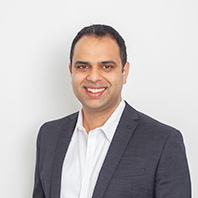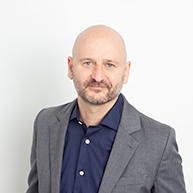Central Auckland, East Auckland, North Auckland, South Auckland, West Auckland > Private Hospitals & Specialists >
Auckland Radiology Group
Private Service, Radiology, Pregnancy Ultrasound
Description
| Xray |
Ultrasound (incl Obstetric) |
MRI | CT | Fluoroscopy | Scintigraphy | HSG | |
| 101 Remuera Road | ● | ● | ● | ● | ● | ● | ● |
| Avondale | ● | ||||||
| Glenfield | ● | ● | ● | ● | ● | ||
| Hauraki | ● | ● | |||||
| Henderson | ● | ● | ● | ● | |||
| Howick | ● | ● | |||||
| Papakura | ● | ● | |||||
| Parnell | ● | ● | |||||
| Ponsonby | ● | ● | |||||
| Pukekohe | ● | ● | |||||
| Queen St. | ● | ● | |||||
| Royal Oak | ● | ● | |||||
| St Johns | ● | ● | ● | ||||
| Takanini (US & MRI) | ● | ● | |||||
| Ti Rakau | ● |
- diagnose disease states, such as cancer or heart disease
- show the extent of injury to body structures
- to aid in interventional procedures, such as angiography.
- Medical Imaging Technologists (MITs) or Radiographers perform your X-ray and barium examinations.
- Sonographers are MITs who perform your ultrasound examinations.
- Radiologists are specialist doctors who read and understand your films. They will also be involved if you have an intravenous urogram (IVU), barium study, biopsy and a number of other ultrasound procedures. They interpret the results of the images and send them to your doctor.
Consultants
Note: Please note below that some people are not available at all locations.
-

Dr Jash Agraval
Radiologist
Available at all locations.
-

Dr Richard Beedie
Radiologist
Available at all locations.
-

Dr Sarah Benson-Cooper
Radiologist
Available at all locations.
-

Dr Stephen Bepko
Radiologist
Available at all locations.
-

Dr Rebecca Biggs
Radiologist
Available at all locations.
-

Dr Barnaby Clark
Radiologist
Available at all locations.
-

Dr Brigid Connor
Radiologist
Available at all locations.
-

Dr Daniel Cookson
Radiologist
Available at all locations.
-

Dr Nicholas Dodd
Radiologist
Available at all locations.
-

Dr David Dow
Radiologist
Available at all locations.
-

Dr Francois du Toit
Radiologist
Available at all locations.
-

Dr George Foote
Radiologist
Available at all locations.
-

Dr Christabel Logan
Radiologist
Available at all locations.
-

Dr Damien Hoon
Radiologist
Available at all locations.
-

Dr Bonnie Leung
Radiologist
Available at all locations.
-

Dr Glen Lightbody
Radiologist
Available at all locations.
-

Dr Chris McKee
Radiologist
Available at all locations.
-

Dr Stephen Merrilees
Radiologist
Available at all locations.
-

Dr Rhian Miranda
Radiologist
Available at all locations.
-

Dr Robert Mitchell
Radiologist
Available at all locations.
-

Dr Helen Moore
Radiologist
Available at all locations.
-

Dr Vicki Morganti
Radiologist
Available at all locations.
-

Dr Kate O'Connor
Radiologist
Available at all locations.
-

Dr Brendon O'Donoghue
Radiologist
Available at all locations.
-

Dr Kirsten Pearce
Radiologist
Available at all locations.
-

Dr Jane Peart
Radiologist
Available at all locations.
-

Dr David Perry
Radiologist
Available at all locations.
-

Dr Catherine Rule
Radiologist
Not available on location.
-

Dr Robert Sim
Radiologist
Available at all locations.
-

Dr Simran Singh
Radiologist
Available at all locations.
-

Dr Andrew Smith
Radiologist
Available at all locations.
-

Dr Neal Stewart
Radiologist
Available at all locations.
-

Dr Amy Stringer
Radiologist
Available at all locations.
-

Dr Lara Sweetman
Radiologist
Available at all locations.
-

Dr Penelope Symes
Radiologist
Available at all locations.
-

Dr Glen Thomson
Radiologist
Available at all locations.
-

Dr Yun-Jung Jack Tsai
Radiologist
Available at all locations.
-

Dr Stephen Wood
Radiologist
Available at all locations.
-

Dr Rebecca Woodward
Radiologist
Available at all locations.
Doctors
-

Dr Karen Billington
Radiologist
Ages
Child / Tamariki, Youth / Rangatahi, Adult / Pakeke, Older adult / Kaumātua
Referral Expectations
For referrers: click here for referral forms
Fees and Charges Description
We are a Southern Cross Affiliated Provider. Please talk to our Bookings Team (09 529 4850) to find out if your exam is covered.
Procedures / Treatments
X-rays show the structure of your bones and some organs by passing beams through your body. These are absorbed differently by different structures depending on the density. Very dense parts like bones and metal show up clearly as white. Air in the lungs shows up as black, while fat and muscle are shades of grey. This allows radiologists to detect abnormalities. Our x-ray technology generates a digital image immediately, which makes diagnosis and treatment faster. An x-ray is considered safe and painless. What to expect on the day of your x-ray? When you arrive, you will be required to check in with reception. We’ll make sure your details are correct and ask you to complete the appropriate forms. Depending on what part of your body needs to be x-rayed, you may need to remove jewellery, some items of clothing, or change into one of our gowns. You’ll then lie on a comfortable table, and your MIT (Medical Imaging Technologist) will help position your body, and may use pillows to do this. Once you’re all set, the MIT will move behind a screen – you can talk to them at any time. You’ll have to stay very still during your x-ray, which generally only takes a few seconds. If your child is getting an x-ray, your MIT may decide to use restraints to help them stay still. These aren’t painful but can be distressing for young children. You may be able to stay with your child but will need to wear a lead apron to avoid exposure to the x-ray. Your x-ray should only take between 15-30 minutes.
X-rays show the structure of your bones and some organs by passing beams through your body. These are absorbed differently by different structures depending on the density. Very dense parts like bones and metal show up clearly as white. Air in the lungs shows up as black, while fat and muscle are shades of grey. This allows radiologists to detect abnormalities. Our x-ray technology generates a digital image immediately, which makes diagnosis and treatment faster. An x-ray is considered safe and painless. What to expect on the day of your x-ray? When you arrive, you will be required to check in with reception. We’ll make sure your details are correct and ask you to complete the appropriate forms. Depending on what part of your body needs to be x-rayed, you may need to remove jewellery, some items of clothing, or change into one of our gowns. You’ll then lie on a comfortable table, and your MIT (Medical Imaging Technologist) will help position your body, and may use pillows to do this. Once you’re all set, the MIT will move behind a screen – you can talk to them at any time. You’ll have to stay very still during your x-ray, which generally only takes a few seconds. If your child is getting an x-ray, your MIT may decide to use restraints to help them stay still. These aren’t painful but can be distressing for young children. You may be able to stay with your child but will need to wear a lead apron to avoid exposure to the x-ray. Your x-ray should only take between 15-30 minutes.
X-rays show the structure of your bones and some organs by passing beams through your body. These are absorbed differently by different structures depending on the density. Very dense parts like bones and metal show up clearly as white. Air in the lungs shows up as black, while fat and muscle are shades of grey. This allows radiologists to detect abnormalities. Our x-ray technology generates a digital image immediately, which makes diagnosis and treatment faster. An x-ray is considered safe and painless.
What to expect on the day of your x-ray?
When you arrive, you will be required to check in with reception. We’ll make sure your details are correct and ask you to complete the appropriate forms. Depending on what part of your body needs to be x-rayed, you may need to remove jewellery, some items of clothing, or change into one of our gowns.
You’ll then lie on a comfortable table, and your MIT (Medical Imaging Technologist) will help position your body, and may use pillows to do this. Once you’re all set, the MIT will move behind a screen – you can talk to them at any time. You’ll have to stay very still during your x-ray, which generally only takes a few seconds.
If your child is getting an x-ray, your MIT may decide to use restraints to help them stay still. These aren’t painful but can be distressing for young children. You may be able to stay with your child but will need to wear a lead apron to avoid exposure to the x-ray.
Your x-ray should only take between 15-30 minutes.
CT imaging uses special low-dose x-ray equipment to create detailed 2D and 3D images of the body. The CT scan is painless, and takes images in ‘slices’, which give insight into the structure and workings of the area. A contrast medium – a harmless dye – is sometimes needed to make the images easier to read. The CT images are then used by radiologists to diagnose a range of conditions, or in other procedures. CT is considered to be very safe and painless. What to expect on the day of your scan? When you arrive, please check in with reception. We’ll make sure all your details are correct. Depending on the type of CT scan you’re having, you may need to fill out one or two forms. Before your scan, you may need to remove most of your clothing and all of your jewellery and then change into a gown – this makes things easier, and will be more comfortable. If your scan needs contrast, you’ll be given this as a liquid to drink or as an IV injection. Contrast medium is a substance that makes the image of the CT (or MRI) clearer. You’ll then lie on a comfortable table, which we’ll move to get you in the right position for your scan. Once you’re all set, the MIT will move into another room – you can talk to them at any time over the intercom. The bed slides in and out of the CT scan equipment, which is like a big doughnut. You’ll have to stay very still during your scan and may be asked to hold your breath. If you’ve been given an iodinated contrast injection, you may notice a strange metallic taste in your mouth and a warm sensation through your body. Because this warm feeling concentrates in your groin and buttocks, it may feel like you’ve wet yourself. Rest assured, this isn’t the case, and the sensation will subside in a few minutes. The scan time will vary depending on the type of examination required, but as a rule it will take around 30 minutes.
CT imaging uses special low-dose x-ray equipment to create detailed 2D and 3D images of the body. The CT scan is painless, and takes images in ‘slices’, which give insight into the structure and workings of the area. A contrast medium – a harmless dye – is sometimes needed to make the images easier to read. The CT images are then used by radiologists to diagnose a range of conditions, or in other procedures. CT is considered to be very safe and painless. What to expect on the day of your scan? When you arrive, please check in with reception. We’ll make sure all your details are correct. Depending on the type of CT scan you’re having, you may need to fill out one or two forms. Before your scan, you may need to remove most of your clothing and all of your jewellery and then change into a gown – this makes things easier, and will be more comfortable. If your scan needs contrast, you’ll be given this as a liquid to drink or as an IV injection. Contrast medium is a substance that makes the image of the CT (or MRI) clearer. You’ll then lie on a comfortable table, which we’ll move to get you in the right position for your scan. Once you’re all set, the MIT will move into another room – you can talk to them at any time over the intercom. The bed slides in and out of the CT scan equipment, which is like a big doughnut. You’ll have to stay very still during your scan and may be asked to hold your breath. If you’ve been given an iodinated contrast injection, you may notice a strange metallic taste in your mouth and a warm sensation through your body. Because this warm feeling concentrates in your groin and buttocks, it may feel like you’ve wet yourself. Rest assured, this isn’t the case, and the sensation will subside in a few minutes. The scan time will vary depending on the type of examination required, but as a rule it will take around 30 minutes.
CT imaging uses special low-dose x-ray equipment to create detailed 2D and 3D images of the body. The CT scan is painless, and takes images in ‘slices’, which give insight into the structure and workings of the area. A contrast medium – a harmless dye – is sometimes needed to make the images easier to read. The CT images are then used by radiologists to diagnose a range of conditions, or in other procedures. CT is considered to be very safe and painless.
What to expect on the day of your scan?
When you arrive, please check in with reception. We’ll make sure all your details are correct. Depending on the type of CT scan you’re having, you may need to fill out one or two forms.
Before your scan, you may need to remove most of your clothing and all of your jewellery and then change into a gown – this makes things easier, and will be more comfortable. If your scan needs contrast, you’ll be given this as a liquid to drink or as an IV injection. Contrast medium is a substance that makes the image of the CT (or MRI) clearer. You’ll then lie on a comfortable table, which we’ll move to get you in the right position for your scan. Once you’re all set, the MIT will move into another room – you can talk to them at any time over the intercom. The bed slides in and out of the CT scan equipment, which is like a big doughnut. You’ll have to stay very still during your scan and may be asked to hold your breath.
If you’ve been given an iodinated contrast injection, you may notice a strange metallic taste in your mouth and a warm sensation through your body. Because this warm feeling concentrates in your groin and buttocks, it may feel like you’ve wet yourself. Rest assured, this isn’t the case, and the sensation will subside in a few minutes.
The scan time will vary depending on the type of examination required, but as a rule it will take around 30 minutes.
Using a strong magnetic field and radio waves, the MRI machine looks in detail at specific parts of the body, including soft tissue, bone, fat, muscles and internal organs. The imaging it produces is very detailed, which can help your radiologist make an accurate diagnosis. MRI is considered to be very safe. It doesn’t use x-ray and is painless. What to expect on the day of your scan? When you arrive, please check in with reception. We’ll make sure your details are correct and give you two forms to complete. You will be given a gown to change into and asked to remove most of your clothing, including glasses, jewellery, watch, hearing aids and hairpins. You’ll lie on a comfortable table, where we’ll position you correctly for your scan. Sometimes you might also have an antenna (often referred to as a coil) positioned on your body, which shows the machine where to focus. Once you’re all set, the MIT will move into another room – you can talk to them at any time over the intercom. You’ll then slowly slide into the scanner. It might feel a little daunting at first, but remember that MRI is safe, and we’ll be on hand to make the experience as pleasant as possible. We can play your favourite music in the scanner, and fans keep the air fresh and breezy. There’s also a button you can push to stop the whole thing – you’re in full control. During the test, the MIT will take a number of images from all different angles, so it’s important to stay as still as possible – this will help make sure your images come out clear, so our radiologists can properly interpret them. As the machine takes images, you’ll hear loud knocking noises – this is totally normal and hearing protection will be provided to you. Depending on your scan, you may be asked to hold your breath. You may also be injected with a dye, called a contrast medium, which makes scans easier to read. This dye has been used in medicine for many years; it’s very safe and you won’t have any after-effects from it. The scan time will vary depending on the type of examination required, but as a rule it will take around 30 minutes.
Using a strong magnetic field and radio waves, the MRI machine looks in detail at specific parts of the body, including soft tissue, bone, fat, muscles and internal organs. The imaging it produces is very detailed, which can help your radiologist make an accurate diagnosis. MRI is considered to be very safe. It doesn’t use x-ray and is painless. What to expect on the day of your scan? When you arrive, please check in with reception. We’ll make sure your details are correct and give you two forms to complete. You will be given a gown to change into and asked to remove most of your clothing, including glasses, jewellery, watch, hearing aids and hairpins. You’ll lie on a comfortable table, where we’ll position you correctly for your scan. Sometimes you might also have an antenna (often referred to as a coil) positioned on your body, which shows the machine where to focus. Once you’re all set, the MIT will move into another room – you can talk to them at any time over the intercom. You’ll then slowly slide into the scanner. It might feel a little daunting at first, but remember that MRI is safe, and we’ll be on hand to make the experience as pleasant as possible. We can play your favourite music in the scanner, and fans keep the air fresh and breezy. There’s also a button you can push to stop the whole thing – you’re in full control. During the test, the MIT will take a number of images from all different angles, so it’s important to stay as still as possible – this will help make sure your images come out clear, so our radiologists can properly interpret them. As the machine takes images, you’ll hear loud knocking noises – this is totally normal and hearing protection will be provided to you. Depending on your scan, you may be asked to hold your breath. You may also be injected with a dye, called a contrast medium, which makes scans easier to read. This dye has been used in medicine for many years; it’s very safe and you won’t have any after-effects from it. The scan time will vary depending on the type of examination required, but as a rule it will take around 30 minutes.
Using a strong magnetic field and radio waves, the MRI machine looks in detail at specific parts of the body, including soft tissue, bone, fat, muscles and internal organs. The imaging it produces is very detailed, which can help your radiologist make an accurate diagnosis. MRI is considered to be very safe. It doesn’t use x-ray and is painless.
What to expect on the day of your scan?
When you arrive, please check in with reception. We’ll make sure your details are correct and give you two forms to complete. You will be given a gown to change into and asked to remove most of your clothing, including glasses, jewellery, watch, hearing aids and hairpins. You’ll lie on a comfortable table, where we’ll position you correctly for your scan. Sometimes you might also have an antenna (often referred to as a coil) positioned on your body, which shows the machine where to focus.
Once you’re all set, the MIT will move into another room – you can talk to them at any time over the intercom. You’ll then slowly slide into the scanner. It might feel a little daunting at first, but remember that MRI is safe, and we’ll be on hand to make the experience as pleasant as possible. We can play your favourite music in the scanner, and fans keep the air fresh and breezy. There’s also a button you can push to stop the whole thing – you’re in full control.
During the test, the MIT will take a number of images from all different angles, so it’s important to stay as still as possible – this will help make sure your images come out clear, so our radiologists can properly interpret them. As the machine takes images, you’ll hear loud knocking noises – this is totally normal and hearing protection will be provided to you. Depending on your scan, you may be asked to hold your breath. You may also be injected with a dye, called a contrast medium, which makes scans easier to read. This dye has been used in medicine for many years; it’s very safe and you won’t have any after-effects from it.
The scan time will vary depending on the type of examination required, but as a rule it will take around 30 minutes.
An ultrasound uses high frequency sound waves that bounce off body tissue. These waves create echoes, which are recorded and displayed in real time on a monitor. These are used for obstetric images during a pregnancy, as well as for scanning a wide range of body parts and conditions. Ultrasound doesn’t use radiation and is considered completely safe for children and during pregnancy. What to expect on the day of your appointment? When you arrive, please check in with reception. We’ll check your details and make sure they are correct. The skilled sonographer performing the examination will ask you questions about your scan, listen to you and make you feel comfortable. The procedure will be explained in detail and the sonographer will answer any questions you have before starting the examination. Depending on your scan, you may be asked to remove most of your clothing and then change into a gown – this makes things easier and will be more comfortable for you. Scans typically last between 30 and 45 minutes. There are two main types of scans: External ultrasound - where the probe is moved over your skin. This is most common for pregnancy, muscles, liver, kidney and other internal organs, and uses a water-based gel to help the probe glide. Internal ultrasound - where the probe is inserted into the body. You’ll either lie on your back or as instructed by your sonographer. The small probe is inserted gently into the vagina or rectum. This may be slightly uncomfortable, but not painful. NB: We understand that an internal ultrasound can be a personally invasive procedure, so you are welcome to request a female sonographer to perform this scan. Please make this known at the time of booking your appointment.
An ultrasound uses high frequency sound waves that bounce off body tissue. These waves create echoes, which are recorded and displayed in real time on a monitor. These are used for obstetric images during a pregnancy, as well as for scanning a wide range of body parts and conditions. Ultrasound doesn’t use radiation and is considered completely safe for children and during pregnancy. What to expect on the day of your appointment? When you arrive, please check in with reception. We’ll check your details and make sure they are correct. The skilled sonographer performing the examination will ask you questions about your scan, listen to you and make you feel comfortable. The procedure will be explained in detail and the sonographer will answer any questions you have before starting the examination. Depending on your scan, you may be asked to remove most of your clothing and then change into a gown – this makes things easier and will be more comfortable for you. Scans typically last between 30 and 45 minutes. There are two main types of scans: External ultrasound - where the probe is moved over your skin. This is most common for pregnancy, muscles, liver, kidney and other internal organs, and uses a water-based gel to help the probe glide. Internal ultrasound - where the probe is inserted into the body. You’ll either lie on your back or as instructed by your sonographer. The small probe is inserted gently into the vagina or rectum. This may be slightly uncomfortable, but not painful. NB: We understand that an internal ultrasound can be a personally invasive procedure, so you are welcome to request a female sonographer to perform this scan. Please make this known at the time of booking your appointment.
An ultrasound uses high frequency sound waves that bounce off body tissue. These waves create echoes, which are recorded and displayed in real time on a monitor. These are used for obstetric images during a pregnancy, as well as for scanning a wide range of body parts and conditions. Ultrasound doesn’t use radiation and is considered completely safe for children and during pregnancy.
What to expect on the day of your appointment?
When you arrive, please check in with reception. We’ll check your details and make sure they are correct.
The skilled sonographer performing the examination will ask you questions about your scan, listen to you and make you feel comfortable. The procedure will be explained in detail and the sonographer will answer any questions you have before starting the examination.
Depending on your scan, you may be asked to remove most of your clothing and then change into a gown – this makes things easier and will be more comfortable for you.
Scans typically last between 30 and 45 minutes.
There are two main types of scans:
External ultrasound - where the probe is moved over your skin. This is most common for pregnancy, muscles, liver, kidney and other internal organs, and uses a water-based gel to help the probe glide.
Internal ultrasound - where the probe is inserted into the body. You’ll either lie on your back or as instructed by your sonographer. The small probe is inserted gently into the vagina or rectum. This may be slightly uncomfortable, but not painful.
NB: We understand that an internal ultrasound can be a personally invasive procedure, so you are welcome to request a female sonographer to perform this scan. Please make this known at the time of booking your appointment.
A Scintigraphy or (otherwise known as) Radionuclide Scan is commonly called nuclear medicine. It’s painless and helps with diagnosis for a wide range of conditions. Nuclear medicine uses a tracer dye, which is mildly radioactive, but is considered very safe. The radioactivity is about the same as an x-ray, and it dissipates within a few days. These scans are considered to be very safe and painless.
A Scintigraphy or (otherwise known as) Radionuclide Scan is commonly called nuclear medicine. It’s painless and helps with diagnosis for a wide range of conditions. Nuclear medicine uses a tracer dye, which is mildly radioactive, but is considered very safe. The radioactivity is about the same as an x-ray, and it dissipates within a few days. These scans are considered to be very safe and painless.
A Scintigraphy or (otherwise known as) Radionuclide Scan is commonly called nuclear medicine. It’s painless and helps with diagnosis for a wide range of conditions. Nuclear medicine uses a tracer dye, which is mildly radioactive, but is considered very safe. The radioactivity is about the same as an x-ray, and it dissipates within a few days. These scans are considered to be very safe and painless.
CT Calcium Score is a specialised CT technique that uses very high speed and high resolution images in order to detect calcium on the coronary arteries that supply the heart. No intravenous dye or other preparation is required and the test generally takes less than 15 minutes. The presence of calcium reflects “Coronary Artery Disease” (CAD), and CT can detect it before symptoms (such as a heart attack) occur. The amount of calcium is given as a score, which is compared to a reference group of your age and gender to determine your relative risk of CAD. Early detection allows time to modify risk factors. CT is considered to be very safe and painless.
CT Calcium Score is a specialised CT technique that uses very high speed and high resolution images in order to detect calcium on the coronary arteries that supply the heart. No intravenous dye or other preparation is required and the test generally takes less than 15 minutes. The presence of calcium reflects “Coronary Artery Disease” (CAD), and CT can detect it before symptoms (such as a heart attack) occur. The amount of calcium is given as a score, which is compared to a reference group of your age and gender to determine your relative risk of CAD. Early detection allows time to modify risk factors. CT is considered to be very safe and painless.
CT Calcium Score is a specialised CT technique that uses very high speed and high resolution images in order to detect calcium on the coronary arteries that supply the heart. No intravenous dye or other preparation is required and the test generally takes less than 15 minutes. The presence of calcium reflects “Coronary Artery Disease” (CAD), and CT can detect it before symptoms (such as a heart attack) occur. The amount of calcium is given as a score, which is compared to a reference group of your age and gender to determine your relative risk of CAD. Early detection allows time to modify risk factors. CT is considered to be very safe and painless.
CT Colonography or “Virtual Colonoscopy” is a well established screening tool for bowel (colon) cancer, for both asymptomatic and symptomatic patients. Its accuracy for detection of cancer is equivalent to conventional colonoscopy. It is extremely safe, fast and is less invasive than conventional colonoscopy. No sedation is required and you may resume normal activities straight afterwards. CT imaging uses special low-dose x-ray equipment combined with powerful computing technology to create detailed 2D and 3D images of the body. CT is considered to be very safe and painless.
CT Colonography or “Virtual Colonoscopy” is a well established screening tool for bowel (colon) cancer, for both asymptomatic and symptomatic patients. Its accuracy for detection of cancer is equivalent to conventional colonoscopy. It is extremely safe, fast and is less invasive than conventional colonoscopy. No sedation is required and you may resume normal activities straight afterwards. CT imaging uses special low-dose x-ray equipment combined with powerful computing technology to create detailed 2D and 3D images of the body. CT is considered to be very safe and painless.
CT Colonography or “Virtual Colonoscopy” is a well established screening tool for bowel (colon) cancer, for both asymptomatic and symptomatic patients. Its accuracy for detection of cancer is equivalent to conventional colonoscopy. It is extremely safe, fast and is less invasive than conventional colonoscopy. No sedation is required and you may resume normal activities straight afterwards.
CT imaging uses special low-dose x-ray equipment combined with powerful computing technology to create detailed 2D and 3D images of the body. CT is considered to be very safe and painless.
A hysterosalpingogram (HSG) is a minimally invasive procedure which uses a dye (contrast) and radiation to visualise the uterine cavity and fallopian tubes, to assess for uterine abnormalities and tubal obstruction. Your doctor will request for this procedure to be performed with either water-soluble contrast (Omnipaque) or oil-soluble contrast (Lipiodol). HSG can help to diagnose endometrial polyps, fibroids and scarring, and is part of an assessment for fertility problems.
A hysterosalpingogram (HSG) is a minimally invasive procedure which uses a dye (contrast) and radiation to visualise the uterine cavity and fallopian tubes, to assess for uterine abnormalities and tubal obstruction. Your doctor will request for this procedure to be performed with either water-soluble contrast (Omnipaque) or oil-soluble contrast (Lipiodol). HSG can help to diagnose endometrial polyps, fibroids and scarring, and is part of an assessment for fertility problems.
A hysterosalpingogram (HSG) is a minimally invasive procedure which uses a dye (contrast) and radiation to visualise the uterine cavity and fallopian tubes, to assess for uterine abnormalities and tubal obstruction. Your doctor will request for this procedure to be performed with either water-soluble contrast (Omnipaque) or oil-soluble contrast (Lipiodol).
HSG can help to diagnose endometrial polyps, fibroids and scarring, and is part of an assessment for fertility problems.
Online Booking URL
Public Transport
The Auckland Transport website is a good resource to plan your public transport options.
Pharmacy
Other
Patient Resources
Radiology Info http://www.radiologyinfo.org/
RadiologyInfo is designed to answer your questions about the many radiologic procedures and therapies available to you and your family.
Inside Radiology http://www.insideradiology.com.au/
The InsideRadiology website provides consumers (patients, carers, potential users of radiology) and referrers (general practitioners, specialists and other health professionals) with accurate, up to date information about radiology procedures and interventions that is easy to use and understand.
Website
Contact Details
101 Remuera Road, Remuera, Auckland
Central Auckland
8:30 AM to 5:00 PM.
-
Phone
(09) 529 4850
-
Fax
(09) 529 1545
Healthlink EDI
auckradi
Email
Website
Northern Clinic - Southern Cross North Harbour Campus, 212 Wairau Road, Wairau Valley, Auckland
North Auckland
8:30 AM to 5:00 PM.
-
Phone
(09) 529 4850
-
Fax
(09) 442 2964
Healthlink EDI
auckradi
Email
Website
327 Lake Road, Hauraki, Auckland
North Auckland
8:30 AM to 5:00 PM.
-
Phone
(09) 529 4850
-
Fax
(09) 489 3682
Healthlink EDI
auckradi
Email
Website
53 Lincoln Road, Henderson, Auckland
West Auckland
8:30 AM to 5:00 PM.
-
Phone
(09) 529 4850
-
Fax
(09) 836 2048
Healthlink EDI
auckradi
Email
Website
18 Fencible Drive, Howick
East Auckland
8:30 AM to 5:00 PM.
-
Phone
(09) 529 4850
-
Fax
(09) 535 4768
Healthlink EDI
auckradi
Email
Website
Auckland Counties Medical Integrated Health Centre, 6-18 O'Shannessey Street, Papakura, Auckland
South Auckland
8:30 AM to 8:00 PM.
-
Phone
(09) 529 4850
-
Fax
(09) 297 7622
Healthlink EDI
auckradi
Email
Website
8 Maunsell Road, Parnell, Auckland
Central Auckland
9:00 AM to 5:00 PM.
-
Phone
(09) 529 4850
-
Fax
(09) 529 1545
Healthlink EDI
auckradi
Email
Website
1 Jervois Road, Ponsonby, Auckland
Central Auckland
8:30 AM to 5:00 PM.
-
Phone
(09) 529 4850
-
Fax
(09) 360 2492
Healthlink EDI
auckradi
Email
Website
Pukekohe Health Centre, 10 West Street, Pukekohe, Auckland
South Auckland
8:30 AM to 5:00 PM.
-
Phone
(09) 529 4850
-
Fax
(09) 238 3087
Healthlink EDI
auckradi
Email
Website
641 Manukau Road, Royal Oak, Auckland
Central Auckland
8:30 AM to 5:00 PM.
-
Phone
(09) 529 4850
-
Fax
(09) 625 7111
Healthlink EDI
auckradi
Email
Website
106 Great South Road, Takanini
South Auckland
-
Phone
(09) 529 4850
-
Fax
(09) 299 7368
Healthlink EDI
auckradi
Email
Website
316 Ti Rakau Drive, Burswood, Auckland
East Auckland
8:30 AM to 5:00 PM.
-
Phone
(09) 529 4850
Healthlink EDI
auckradi
Email
Website
79 Queen Street, Auckland Central, Auckland
Central Auckland
8:30 AM to 5:00 PM.
-
Phone
(09) 529 4850
-
Fax
(09) 357 0584
Healthlink EDI
auckradi
Email
Website
2144 Great North Road, Avondale, Auckland
Central Auckland
8:30 AM to 6:00 PM.
-
Phone
(09) 529 4850
-
Fax
(09) 828 8298
Healthlink EDI
auckradi
Email
Website
154 Great South Road, Takanini
South Auckland
8:30 AM to 5:00 PM.
-
Phone
(09) 529 4850
-
Fax
(09) 299 7368
Healthlink EDI
auckradi
Email
Website
261 Morrin Road, Saint Johns, Auckland
Central Auckland
8:30 AM to 5:00 PM.
-
Phone
(09) 529 4850
-
Fax
(09) 528 6849
Healthlink EDI
auckradi
Email
Website
Was this page helpful?
This page was last updated at 12:35PM on March 21, 2024. This information is reviewed and edited by Auckland Radiology Group.

